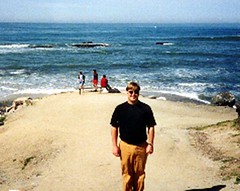What will happen at the auditions?
Aspiring teachers and tutors are asked to give a five-minute teaching presentation, which must include some audience interaction, to [name deleted] staff and fellow auditioners. Auditioners will be stopped at five minutes, so be sure to wrap up your presentation within that time.
What topic should I choose?
Select a topic with some substance, and one that interests you:
. Do not choose a test-preparation subject.
. Do not choose a topic that focuses on physical demonstration, such as
origami, knitting, or juggling.
. A board will be available, and effective boardwork is a plus.
. Imagine that you are presenting to students, not to peers.
Examples of successful audition topics in the past include "How to Interpret the Label on a Bottle of Red Wine," "How to Find an Apartment," and "How Parachutes Work." Note that they have in common a "how to", non-academic focus and the potential for fun. In the end we are less interested in your topic than in your handling of it. We seek to measure each auditioner's skillfulness in presenting, as well as your interaction with the group (teachers) or ability to communicate one-on-one (tutors).
How will my audition be evaluated?
Your presentation will be evaluated on the following criteria:
(1) Clarity.
(2) Effectiveness and organization.
(3) Your ability to create an environment of active participation
(4) Your comfort level in front of a group
(5) Time management-that is, completing your presentation within the allotted time.
(6) Professionalism.
(7) In addition, prospective teachers will be evaluated as to their boardwork.
Prepare and practice your presentation thoroughly, with those criteria in mind. (For those primarily or exclusively interested in private tutoring, criteria #4 and 7 will matter less than the others.) Treat the audition as the job interview that it is. You will have only one opportunity to audition, so make the most of it.
Like a latter day Mr. Phelps, I set about organizing my plan. And, of course, like old whitehead, I went far beyond the specific parameters of the assignment if only to make my actual 5 mintue audition believable for myself. So I conceptualized a class and developed a syllabus for at least the first 6 three hour sessions. My audition would come from the first five minutes of session 2.
My class: a Marxisant Cultural Materialist offering entitled Object Lessons in Popular Culture.
Here's a sniff of the syllabus
Week 1 Course Intro
syllabus review, instructor and student intros, theory intro
Raymond Williams' "Dominant, Residual, Emergent"
Week 2: How Music is Heard at Home
Recording Media: CD, LP, MP3
Week 3: My Music
The portable transistor radio and the prehistory of personal stereos, Sony WalkMan, Sony D-50 "Discman", Apple iPod and other MP3 players
Week 4: My Movie
Home Productions: Super 8, 16 mm, VHS versus Betamax, DVD, Beta Redux: Blu-ray versus HD DVD
Week 5: My Photo 1
Kodak Brownie, Polaroid's Land camera, Leica M series, SLR revolution
Week 6 My Photo 2
Digital and Streaming Media
Videocameras, Camcorders, Webcams, Camera Phones (Sharp's J-SH04), Digital Photography
From this syllabus, I then set about devising a 5 minute spiel that would mimic the opening 5 minutes of Session 2. It set up thusly:
1 minute recap of Wms tripartite model of culture and now apply theory to practice
what is dominant form of recording media?-CD
(but quibble that in certain younger demographics has probably been supplanted by digital downloads)
what is residual form?-LP (but will also accept mention of any tape format and wax cylindera)
what is emergent?-MP3 or digital download/streaming media
All present know what a CD is; many know what MP3s are, but most too young to ever really have dealt with LPS, which were supplanted from dominance by CDs as long ago as 1988.
2 minutes What is an LP?
circular disc of polyvinylchloride (PVC) usually coated with carbon black to a diameter of 12" (actually 302 mm) with a thickness of 0.075" + 0.010" and cut with an modulated spiral groove. For official RIAA vinyl specifications, go here.
2 minutes How does an LP Work?
record based on analog sound recording and reproducing technology which involves a variable signal continuous in time and amplitude as opposed to CD's digital technology, which converts an analog signal into a series of digital packets with either off on (0,1) designations or as a series of steps between the designations of 0 and 1.
Time here, but if they permit me, I will close with comparison of CD and LP as sound recording media

My audience you ask. Kinda daunting, an audience of 1: the capo di capi tutti of the local organization. But he got into the spirit of the thing, answered my opening questions and then kept interrupting me with followups, so that I was worried I'd get screwed on going over time (we went on for maybe 15 minutes formally and another 10 post PowerPoint Slide above in general discussion). His best question at one point referring to residual media was, "what about tapes?" I got to do two nice things:
1. make the point that Williams' model is not simplistically trinitarian; i.e., there is only one dominant culture, but at any given diachronic moment there can be multiple residual and emergent cultures, and
2.Tape technology proves this point. We have Reel-to-Reel of varying sizes, 8 track, cassettes (which in 1985-7 briefly were dominant due to the WalkMan [remember the eerie feeling when you went in a record shop and the vinyl was suddenly at the metaphorical "back of the bus"], and DAT. And I cleaned up the complete history of recording media by mentioning wax cylinders and the shellac 12" 78 rpm.
The results of this audition? Well that's a tale not yet told or sold for that matter. Stay tuned . . .

No comments:
Post a Comment